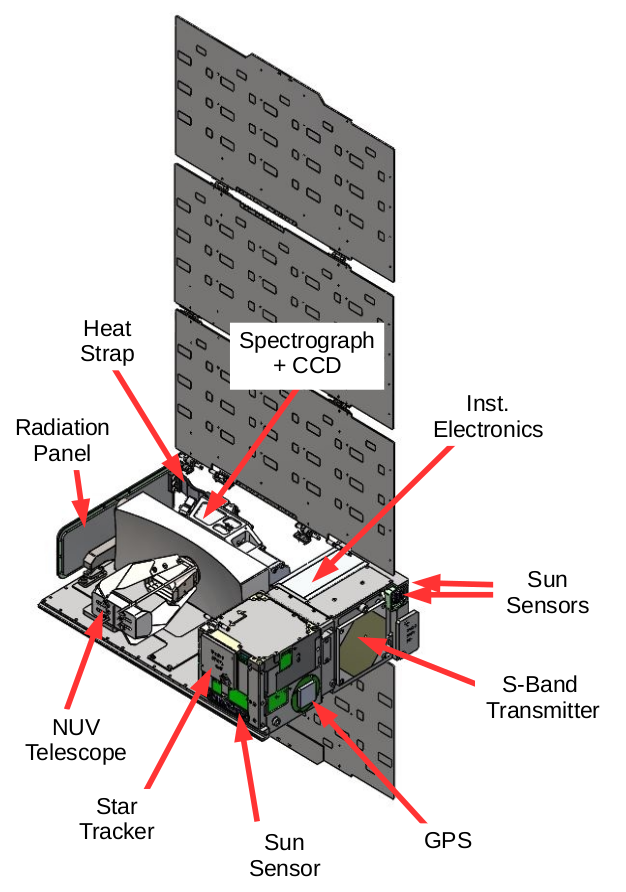Program

Cut-away rendering of CUTE, with transparent top and sides to display the telescope and spectrograph. CUTE has three coarse sun sensors, a star tracker, an S-band transmitter to send data to Earth, and a UHF antenna (not shown) for command uplink.
SPRITE is the second NASA Astrophysics CubeSat to come out of the Colorado Ultraviolet Spectroscopy Program (
CUSP) at the University of Colorado (CU) Laboratory for Atmospheric and Space Physics (
LASP).
The first CUSP CubeSat is the Colorado Ultraviolet Transit Experiment (
CUTE): a 4- year, NASA-funded 6U satellite designed to measure atmospheric composition and escape from close-orbiting massive exoplanets. CUTE utilizes near-ultraviolet (NUV) transmission spectroscopy to measure the fraction of starlight blocked when the planet crosses between the Earth and the star at various wavelengths. With imaging missions such as Kepler or TESS the planet blocks an amount of light proportional to the ratio of the size of the planet to the size of the star. But when spectroscopy is used to break up the colors of the starlight we sometimes see this ratio fluctuate. This is because at some wavelengths the atmospheres are opaque, making the planet appear larger. The wavelengths where this absorption happens tells us what the atmospheres of these planets are made out of, while the apparent size of the atmosphere tells us how extended it is. CUTE is a small satellite, so it can only see the very puffy atmospheres of large, Jupiter-like planets orbiting very close to their star (so that they are very hot!), but this is still a new field of science that only Hubble can currently do. CUTE has a planned 1-year mission lifetime and will launch in March of 2021. Read more about
CUTE here and follow it on
Twitter here!
The PI of SPRITE is University of Colorado Research Professor Brian Fleming. Prof. Fleming is a member of the CUTE team, as are a number of co-investigators and team engineers, and their experience with CUTE has been invaluable in crafting this challenging next mission. The SPRITE team consists of a multi-disciplinary team of scientists, engineers, and students – balancing professional space-hardware practices with the mission of educating the next generation of space mission designers and scientists. SPRITE is expected to launch into a low Earth orbit in late 2022.